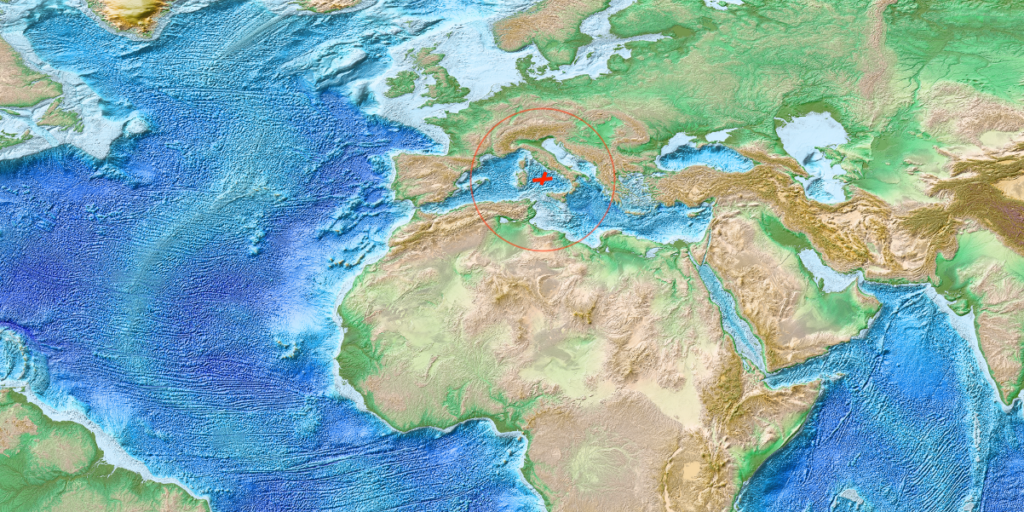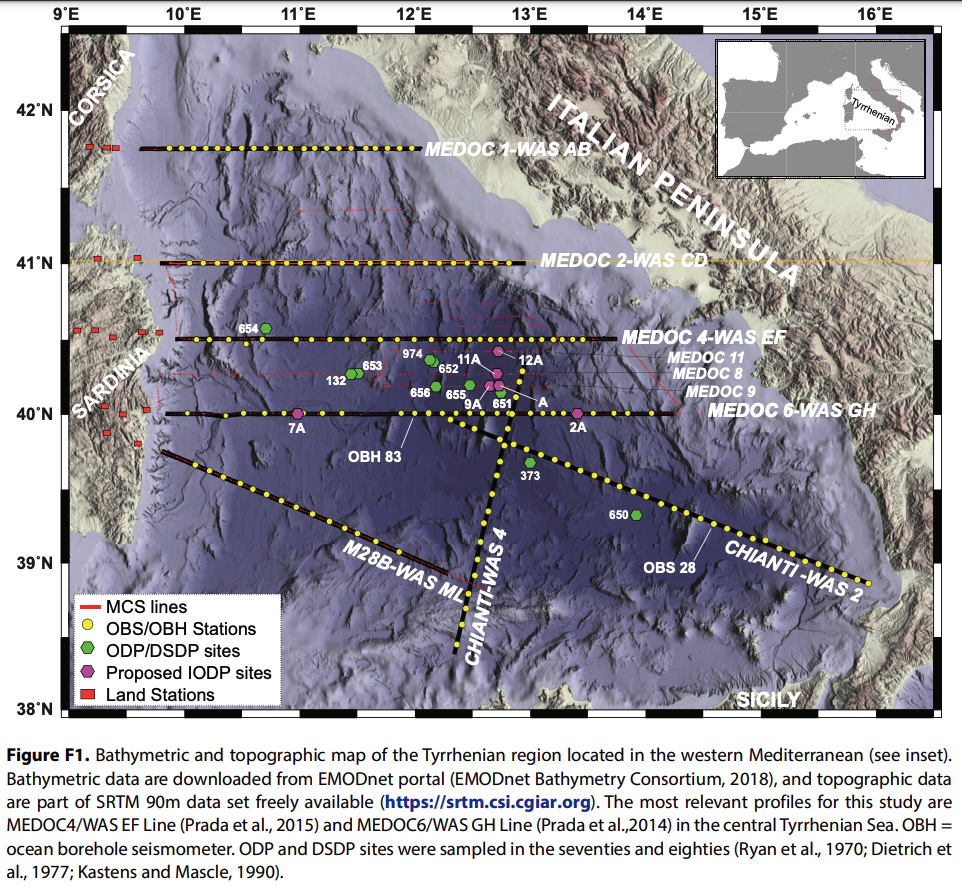Understanding plate dynamics – Luca Magri on Expedition 402
Tyrrhenian Continent-Ocean Transition
A collection of cores – sampled in a small cross off the coast of Italy – could help settle a debate in plate tectonics that’s been running for over 30 years.
ANZIC expeditioner, Luca Magri, will be on board.

While plates moving apart to create new seafloor is known even to high school students, the details of the exact series of events in this divergence is not well understood and current models are not well constrained.
IODP Expedition 402 hopes to sort out some of the details.
The expedition will drill to recover cores from the Tyrrhenian Sea in the Western Mediterranean – between Italy’s ‘boot’ and the island of Sardinia. Taking core samples in a cross pattern – two perpendicular transects – means scientists can build a three dimensional understanding of the nature of the basement rocks, any exhumed magma, and quantify extension rates in both dimensions.
What they find will improve our understanding and current models of how continents break apart and move.

Luca Magri, PhD candidate at the University of Tasmania, is ANZIC’s Expeditioner on Expedition 402. We caught up with Luca to learn more while he was in Italy, waiting to set sail.
“Our theories say that when the continents break up, you’ve got continental crust at the edges, then a segment of exhumed mantle and then at the centre of the deformation there’s new sea floor forming part of the oceanic crust. That’s the typical standard progression. But over 30 years ago, we discovered that in the Tyrrhenian Basin, things are switched, it’s quite anomalous, not fitting with the current model.”
“So we need to understand, by seeing the composition of the rocks within this basin, what is going on here. Perhaps the model is lacking and this isn’t as unusual as it first looks,” Luca explains.
“We’re hoping to pinpoint the timing and dynamics of mantle exhumation and the extension of the new seafloor, and how that’s related to the geometry here.”
“I want to reconstruct a detailed plate tectonic history of the Tyrrhenian Basin.”
The results could shed light on what’s happening beneath our oceans elsewhere in the world too.
Luca’s PhD research focuses on the Australian-Antarctic rift system, understanding the evolution of the Kerguelen Plateau located in the Southern Ocean.
“I’m studying how the Earth’s crust stretches and breaks up, especially in the Southern Ocean, the mechanism of that breakup between Australia and Antarctica,” Luca says. “I’m using seismic data to interpret what is happening and how that ties in with the lithology.”
“I’m also creating a numerical model to simulate that break up, based on seismic and drilling data.”
“It’s actually a similar geological setting to the Tyrrhenian Basin. What we learn on this expedition to the Tyrrhenian will provide ground truth information which is essential to better constrain models which simulate these processes and deformation.with
The Tyrrhenian Basin is an excellent place to study these questions.
“Because the basement is very young,” explains Luca, “the sediment is thin, so it should be easier to get to the information – from the bedrock beneath the sediments – that we need.”
The basin has also been well mapped and extensively studied in the past, so there is other data to combine with what is found in the cores collected in this expedition to give a better overall picture.

Luca has been to sea for his science before and can’t wait to get back.
“I’ve been lucky enough to sail on the RV Investigator in the past, once in the Southern Ocean for my PhD and another trip to the Kermadec Arc near Tonga to study volcanic activity. I was also part of a RV Falkor voyage in the Coral Sea, mapping the seafloor. It was a fantastic experience.”
“But for sediment and hard rock coring, the IODP vessel JOIDES Resolution is legendary.”
“Since I was an undergraduate, I’ve heard about IODP. So it’s such a privilege to be able to go and be part of an expedition. It’s a thrill.”
When asked if he was apprehensive in any way about the trip – two months at sea, working 12 hour shifts – he laughed. “It’s a bit of a concern that at some point, after a month or so, we run out of fresh food. I mean,” he says with a grin, “at some point is there a change – there’s no bananas anymore, just banana bread?”
We wish Luca well with his research and the voyage in his home seas.
Find out more
Mid-Expedition update from IODP: Happening Now… Expedition 402
